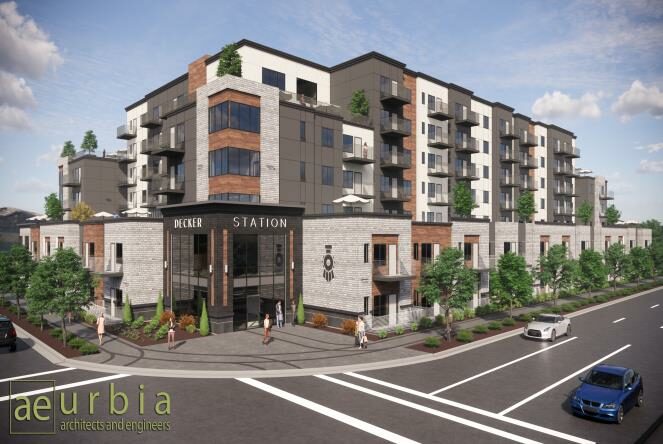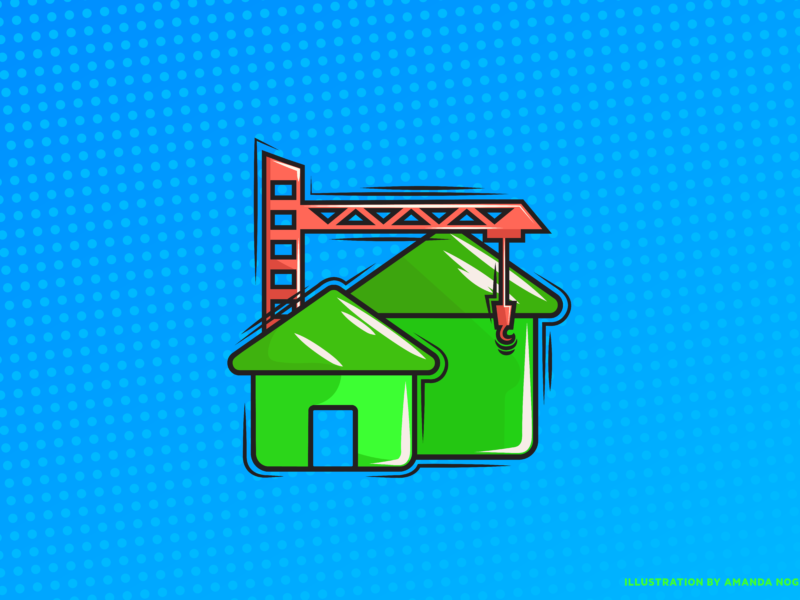Lap of Luxury: High-end Home Communities are on the Rise in Utah
Joel Shine spent years commuting from his Santa Monica, California, home to Park City before deciding to move his family to the Beehive State. “As much as I loved where we lived, I would land in L.A., battle through traffic and smog and congestion just to get home. When I commuted to Park City, I would drive up the canyon and look at the beauty. I finally said to my wife, ‘This is crazy,’ and we moved to Park City and fell in love with it.”
Shine is one of many who have travelled to Utah for business or pleasure and ultimately decided to find a new home in the state. But he is not only a Park City resident—Shine also serves as president and CEO of Woodside Homes, one of Utah’s top homebuilders and developer of Park City’s East Creek Ranch, a high-end home community.
As more and more executives and entrepreneurs discover Utah’s thriving business and tech scene coupled with the state’s diverse outdoor rec and lifestyle opportunities, they are choosing to move to Utah or build a vacation home here. This in-migration from nearly every corner of the United States has spurred development among Utah’s high-end home communities. From Logan to St. George, high-end homes, which are typically defined as those appraised for around $1 million, are on the rise throughout the state.
Home Stretch
Like the rest of the country, Utah’s homeowners were hit hard during the Great Recession, losing more than $25 billion in equity. In the years that followed, the homebuilding and resale industry sat stagnant as the economy slowly improved. While the middle and low-end housing segments were greatly impacted, Utah’s high-end segment also felt the economic punch. Buying a luxury home during the downturn became next to impossible—unless the buyer had cash.
“Financing was a big part of the problem,” says Nancy Tallman, president of the Park City Board of Realtors. “People couldn’t get financing for residential land and construction loans. Even today, it’s more difficult to get loans, even if you want to buy a resale home.”
The story was particularly dim in the St. George area, which experienced phenomenal growth in pre-recession years. Before the recession, Southern Utah reached a record number of more than 3,500 annual single-family building permits, according to Mari Krashowetz, president of the Southern Utah Home Builders Association. And the area’s high-end housing segment was rapidly expanding, as indicated by Parade of Home data.
During the height of the housing boom, “many large homes were built with an average of 5,700 square feet and $2.2 million average home price,” Krashowetz says. “Compare that with the housing downturn, less than 500 annual single family permits were issued and Parade homes were reduced to 3,100 average square feet and a cost of $583,000.”
As the recession gripped the economy, several luxury homes across the state were abandoned. “Many of them walked away from the projects, leaving builders stuck with partially complete homes and a significant personal investment in the project. Other people with money came in and bought up those distressed properties,” Krashowetz says, speaking specifically of the Southern Utah area. “They were able to purchase for pennies on the dollar.”
After years of stagnant growth, the real estate picture in Southern Utah and across the state is looking brighter. “In 2015, the average Parade home price, representative of the luxury home market, is $765,000 with approximately 3,500 average square feet. Through year-to-date, 1,290 single-family permits have been issued. These numbers are continuing to increase as the recovery continues,” Krashowetz says.
The Wasatch Front and Park City area is also experiencing a significant rebound. “As the recession came to a close, costs returned to normal and the work in the luxury market did not slow down,” says Brad Simons, vice president and CFO of Magleby Construction. “With Utah’s strong economy, the luxury market is very strong in the state, specifically in the Park City market. Many customers are from out of state but a good number of instate customers are also investing in new homes.”
Where the Grass is Greener
From Park City to the Ogden area to St. George, Utah’s luxury residential segment has made a comeback. Developers are building beautiful custom homes in nearly every corner of the state. But beyond single, custom-built luxury homes, several developers are creating high-end communities. These communities include several luxury homes sitting on hundreds of acres of pristine Utah property. They boast first-class interior amenities and modern architectural design, as well as outdoor facilities, such as swimming pools and spa areas, clubhouses and gyms. Many also offer premier access to Utah’s renowned golf courses and ski resorts.
While luxury communities are being developed around the state, Park City remains the state’s most popular town for affluent buyers. Home to world-class ski resorts, a bustling arts, entertainment and dining community, and located in proximity to downtown Salt Lake, it’s no surprise that people from around the world are moving to the Park City area. In response, Park City has seen several luxury communities rise within its boundaries in recent years.
Shine says Woodside Homes was eyeing the Park City area for several years as a top destination to build its first Utah-based luxury community. “We didn’t have anything under construction in Park City, which we really wanted to do. We’re not a builder who builds a house here or there, so we looked for a place to do a project of 70 homes,” he says. “For us, building in Park City made sense. We build about 2,000 homes nationwide, and this is probably the highest-price product in our company. We put a lot of time and attention into creating a beautiful design, and the market seems to be agreeing with us.”
Woodside Homes’ East Creek Ranch is one of many high-end communities in the greater Park City area, and there are several more projects in the pipeline, says Tallman. “Canyons resort area has a lot of plotted condominiums that haven’t been built yet. There’s some vacant residential plots at The Colony [at Park City resort] and at Deer Crest [at Deer Valley], which is a ski in/ski out neighborhood,” she says. “These plots are expensive. The median price of a plot at The Colony is $1.82 million, so people aren’t going to build just anything there.”
As Park City remains ever popular, neighboring towns, like Heber and Midway, are beginning to see their own rise in high-end development. Communities like Cascades at Soldier Hollow, built by Magleby Construction, and The Swiss Colonies of Valais, built by Watts Construction, offer many of the same luxuries as those found in Park City with a more affordable price tag starting around $600,000.
The Wasatch Front has also seen its share of high-end community development, such as Cobblewood Estates in the heart of Highland, Trappers Ridge located at the base of the Powder Mountain Resort and The Fairways at Eden near Pineview Reservoir.
The Whole Package
Perhaps the best part of building a luxury home is being able to customize every single detail. “What you’re paying for is to get a higher level of finish and a higher level of technology and design,” says Shine. “I think that it’s a hell of a bargain for what you’re getting. It really is the whole package.”
Regardless of which high-end community you look at, each home is thoughtfully designed and constructed with expansive living areas and detailed finishes that reflect the best of affluent living. From professionally inspired kitchens to spa-like bathrooms to customized wine cellars, today’s buyers are creating the homes of their dreams.
“You can build whatever you want,” says Shine. “The world of everybody growing up with 2.2 kids and a white picket fence isn’t what happens anymore. Whether you’re single, divorced, divorced with kids, roommates, brothers and sisters, or multigenerational, there’s just about every conceivable permutation of what everyone could want.”
“Every home is so unique,” adds Simons. “We are seeing of lot of gyms in homes and exercise rooms, while theater rooms are not being built [anymore] as separate rooms, but rather being incorporated into larger home spaces. Pools are very popular, as well as high-end kitchen appliance packages.”
Smart homes are also growing in popularity, but Shine says the technology is still being perfected—and it’s expensive. “The technology isn’t 100 percent there to do the ultimate smart home—where literally everything talks to everything. It’s getting more technologically advanced every year, and each buyer needs to ask themselves how much electronic connectivity they want. In addition, they need to ask themselves how much are they willing to pay for it.”
Shine adds that energy efficient homes have become the standard. “All the homes being built today are so much greener than the homes being built 25 years ago. There’s no comparison. There’s much more thought toward orienting the windows, HVAC design, water heating systems, solar panels. All of that is geared toward being green in two different ways—environmentally and saving money.”
Interior design trends Tallman is seeing include quartz replacing granite, and walnut or bleached oak wood replacing knotty alder. Free standing tubs are gaining popularity in the bathroom, replacing jetted tubs, while glass, frameless showers remain in high demand, she says.
By far the most significant design trend seen in today’s high-end home are open floor plans that include walls of windows or sliding-glass doors that seamlessly integrate indoor and outdoor living spaces.
“People want big walls of windows with open floor plans,” says Tallman. “Even in Park City, where we have shorter summers, the summers are beautiful and people want to be outside. What we’re seeing are walls of windows, walls of doors that will fold and disappear so that you have that transition from indoor to outdoor living.”
Shine agrees. “There’s a demand for combined indoor/outdoor space. Buyers want to go inside and outside seamlessly, with big sliding glass doors that open up to an enclosed patio,” he says. “People want a more casual lifestyle, and people want to entertain. When they’re gathered in the kitchen, they want to be able to grab their drink or appetizer and walk into the sitting area or walk outside without having to walk throughout different parts of the house.”
On the Horizon
As Utah’s residential homebuilding activity heats up in the middle and low-end segment, realtors and homebuilders are also anticipating strong activity in the state’s high-end communities. But there are challenges ahead, including a labor shortage.
According to Simons, there is “a good current work load with a strong pipeline of future work. There seems to be a lot of very large homes in the pipeline that is affecting the ability of our architectural partners to keep up with the work load demands.”
Park City is facing its own share of problems, including a lack of inventory. “We have very little new product because there was no new construction for several years,” says Tallman. “There’s a lot of new construction in the pipeline right now, but for someone who’s looking for a home today, there isn’t that much inventory. There is less inventory than demand for new homes.
Land supply is also an issue Park City is experiencing. “Land has become more valuable than the houses sitting on it,” Tallman says. “In older neighborhoods, with homes built in ‘70s, the homes have things like low ceilings and they’re hard to remodel. People are buying them and tearing them down. It’s sad, but it happens in a lot of neighborhoods.”
Despite its challenges and expensive price tag, Park City is still a popular place for affluent buyers. Tallman anticipates the Park City area will see even greater housing demand due to Vail’s merger of Canyons and Park City resorts.
While “cautious optimism” remains the sentiment of choice among most real estate professionals, it seems as though nearly every corner of the market is holding strong and steady. “Volume is back up, prices are back up, shoppers are on the market, deals are getting done,” says Shine. “It seems like a pretty healthy market to me.”





